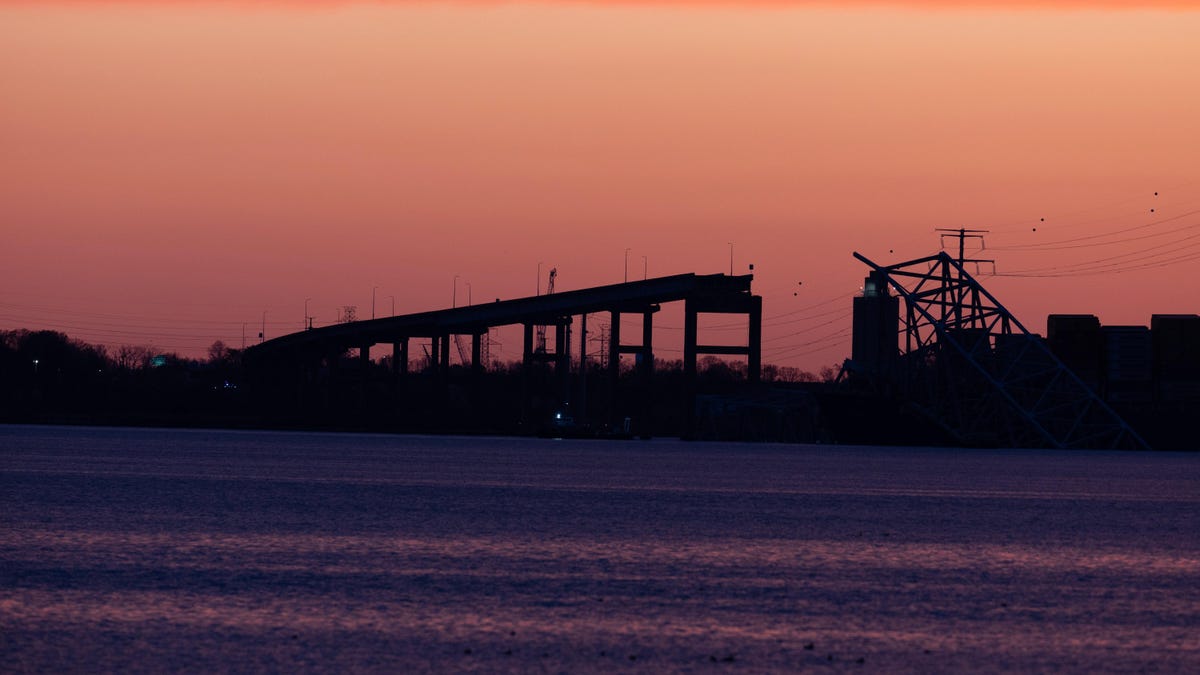Almost immediately after a cargo ship crashed into destroyed the Francis Scott Key Bridge in Baltimore in the early morning hours of March 26, conspiracy theorists started spreading false information and asking dumbass questions about the disaster. On the other side of it, actual journalists have talked about the real logistics and the fallout of the crash and collapse. We’ve, of course, covered that eight workers went into the water and only two made it out alive, but that just reduces these people to numbers.
The real victims of this horrific incident – six immigrant workers from Mexico and Central America – have been sort of lost in the whole ordeal. After all, these were people who came to the U.S. and took jobs trying to fix a vital piece of American Infrastructure, which is more than any conspiracy theorist who blames this disaster on the “border crisis” has ever done for this country.
Anyway, a journalist at the Associated Press took the time to speak to the families of some of the victims to learn who they really were. The governments of Mexico, Guatemala, El Salvador and Honduras confirmed their citizens were among the six people originally missing. (Two bodies have been found, and there are still four people yet to be located).
Here’s what the AP learned about Maynor Yassir Suazo Sandoval, a 38-year-old who was the youngest of eight siblings from a rural boarder town in Honduras:
Eighteen years ago, he set out on his own for the U.S. looking for opportunities. He had worked as an industrial technician in Honduras, repairing equipment in the large assembly plants, but the pay was too low to get ahead, one of his brothers, Martín Suazo Sandoval, said Wednesday while standing in the dirt street in front of the family’s small hotel in Honduras.
“He always dreamed of having his own business,” he said.
Another brother, Carlos Suazo Sandoval, said Maynor hoped to retire one day back in Guatemala.
“He was the baby for all of us, the youngest. He was someone who was always happy, was always thinking about the future. He was a visionary,” he told The Associated Press by phone Wednesday from Dundalk, Maryland, near the site of the bridge collapse.
Maynor entered the United States illegally and settled in Maryland. At first, he did any work he could find, including construction and clearing brush. Eventually, he started a package delivery business in the Baltimore-Washington area, Martín Suazo Sandoval said.
Other siblings and relatives followed him north.
“He was the fundamental pillar, the bastion so that other members of the family could also travel there and later get visas and everything,” Martín Suazo Sandoval said. “He was really the driving force so that most of the family could travel.”
Maynor has a wife and two children ages 17 and 5, he said.
The COVID-19 pandemic forced Maynor to find other work, and he joined Brawner Builders, the company that was performing maintenance on the bridge when it collapsed.
Martín Suazo Sandoval said Maynor never talked about being scared of the work, despite the heights he worked at on the bridges. “He always told us that you had to triple your effort to get ahead,” Martín Suazo Sandoval said. “He said it didn’t matter what time or where the job was, you had to be where the work was.”
Things had been going well for him until the collapse. He was moving through the steps to get legal residency and planned to return to Honduras this year to complete the process, his brother said.
Even though Maynor had not been able to return to Honduras, he had financially supported various nongovernmental social organizations in town, as well as the youth soccer league, his brother said. The area depends largely upon agriculture — coffee, cattle, sugarcane — he said.
Maynor’s employer broke the news of his disappearance to his family, leaving them devastated, especially his mother, who still lives in Azacualpa, Martín Suazo Sandoval said.
“These are difficult moments, and the only thing we can do is keep the faith,” he said, noting that his younger brother knew how to swim and could have ended up anywhere. If the worst outcome is confirmed, he said the family would work to return his body to Honduras.
Superintendent of Marlynad State Police, Colonel Roland L. Butler, Jr, announced that the bodies of two men – 35-year-old Alejandro Hernández Fuentes of Mexico and 26-year-old Dorlian Ronial Castillo Cabrera of Guatemala had been located by divers inside a red pickup truck submerged in about 25 feet of water.
Guatemala’s Foreign Affairs Ministry had earlier confirmed that two of its citizens were among the missing. And El Salvador’s foreign minister, Alexandra Hill Tinoco, posted Wednesday on X that one Salvadoran citizen, Miguel Luna, was among the missing workers.
Mexican President Andrés Manual López Obrador said three Mexicans were on the bridge when it fell. Luckily, one of them made it out alive, but unfortunately, two others are still missing. They haven’t been identified yet to keep their families’ privacy.
López Obrador spoke to the Associated Press about the contributions migrants make the U.S. is illustrated in this tragedy:
“This demonstrates that migrants go out and do risky jobs at midnight. And for this reason, they do not deserve to be treated as they are by certain insensitive, irresponsible politicians in the United States,” he said.
If you’re the type of person who sees a tragedy occur and your first thought is “wow, Joe Biden, and the migrants, and Russia, and ISIS, and Ukraine, and the deep state did this,” maybe just take a second reflect on the actual human tole of this tragedy. Then, think about how those folks were more human than you’ll ever be.

